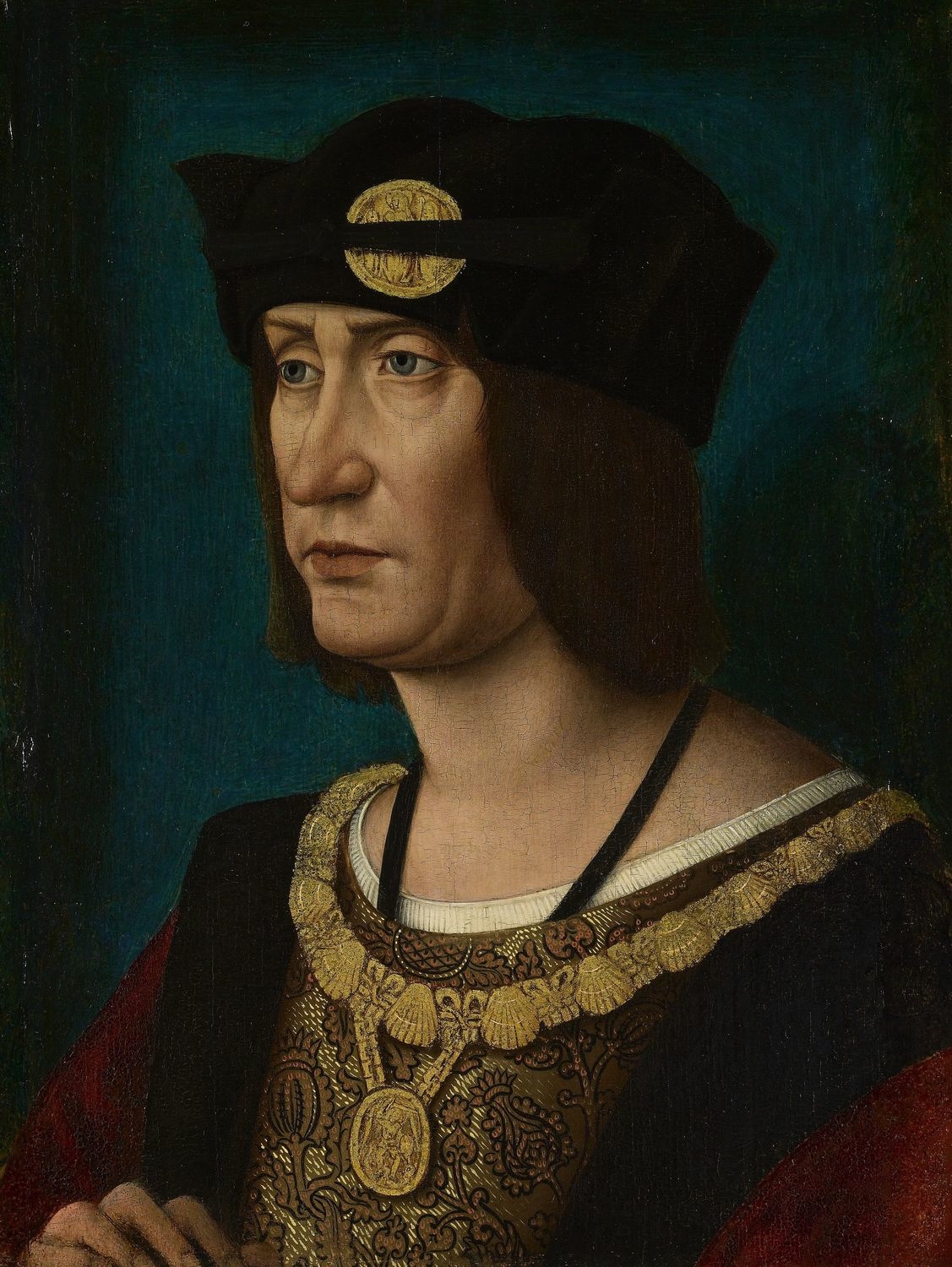The Marriages of Mary Tudor
Chapter 2 : Marriage and Coronation
When Mary finally arrived in France and met Louis XII , he was delighted with his bride. The couple’s formal wedding was held on 9th October 1514, the feast day of St Denis, the patron saint of France.
Just before dawn Mary and her ladies woke and after a light meal they began to dress and prepare for the ceremony. At seven o’clock Mary left her lodgings. Although her apartments were a short distance from the Hôtel de la Fruthuse where the wedding ceremony was to be held, the English made sure the short journey was to be a spectacular event. One observer wrote ‘if the pomp of the most Christian Queen was great yesterday at her entry, this morning, the 9th, it was yet greater ather wedding, which took place at nine o’clock in the King’s house in a large hall’ (Calendar State Papers, Venice, Vol. 2, 510).
At the head of the procession were twenty-six knights marching in pairs, followed by musicians and heralds. Next came Mary wearing a French style gown made from gold brocade, trimmed with ermine and dripping in expensive jewels showing off the wealth of England. Mary wore a coronet studded with jewels and her red hair cascaded down over back as a sign of her virginity. Walking beside Mary were the Duke of Norfolk, the Marquis of Dorset, the Bishop of Durham, the Earl of Surrey, and Lord Monteagle. Each man was dressed in his most expensive clothing, including cloth of gold, damask and silk and wearing heavy golden chains in order to show their personal wealth. Behind Mary walked noblemen and twenty-four ladies wearing cloth of gold and jewellery. Lastly came thirteen women of Mary’s personal staff, each accompanied by a gentleman on either side.
Louis was waiting for his bride in the hall. He wore an outfit of gold and ermine designed to match Mary’s gown. Despite his rich clothing the French king was not as lavishly dressed as other members of his nobility who were each trying to outdo the English. His Master of the Horse had spent 116 crowns per yard for cloth of gold for his clothing. It is estimated that his outfit for the day cost the staggering sum of 2,000 crowns. When Mary finally entered the hall Louis doffed his bonnet and Mary curtsied in response. The king stepped forward and kissed Mary gently before he led her to a seat beside his, under a canopy held by four French noblemen. Florimond Robertet, the King’s Treasurer, stepped forward and presented Louis with a necklace made of ‘a marvellous great pointed diamond, with a ruby almost two inches long without foil, which was esteemed by some men at 10,000 marks’(Richardson 1970, p. 97). The king then turned and gave the necklace to Mary.
Cardinal René de Prie, Bishop of Bayeux, conducted the wedding service. First the Nuptial Mass was sung before the consecrated wafer was broken and shared between Mary and Louis; each kissed the wafer before consuming it. French tradition dictated that the king’s son, or nearest male relative, in this case Francis d’Angoulême, Louis’s son-in-law (and later Francis I of France), serve the king throughout the marriage ceremony while Mary was attended by her daughter-in-law, Claude. Once the ceremony was over, Mary stood, curtseyed to her husband and then rose so the two could kiss. Mary was now officially married.
Mary was crowned Queen of France on Sunday, 5th November 1514. Early in the morning the English Ambassadors were informed by Monsieur de Montmorency that they needed to make their way to the cathedral of St Denis so they could take their seats before other, less important people arrived. At ten o’clock there was a great blast of trumpets signalling Mary’s arrival. A few moments later the French members of nobility arrived including the Ducs d’Alençon, Bourbon, Longueville and Albany, the Comte de Vendôme and the Comte de Saint-Pol. After them came Mary. There are no accounts of what Mary wore for her coronation; for such a momentous occasion it surely must have been a gown of the most dazzling design and material. Mary was led by the hand through the cathedral by Francis d’Angoulême to a cushion in front of the high altar. Mary knelt and the Cardinal de Brie stepped forward anointing Mary with the sacred oil before placing the royal sceptre in her right hand and the rod of justice in her left. The Cardinal then placed a ring on Mary’s finger and the matrimonial crown of France on her head.
After this Francis stepped forward and helped Mary to her feet before guiding her to the chair of state beneath a canopy on the left side of the altar. The crown was so heavy that Francis had to move to stand behind where Mary sat so that he could hold the crown symbolically above the new queen’s head. High Mass was then sung by Cardinal de Brie before Mary once more approached the altar. She made an offering before receiving the sacrament. Once this was done the ceremony was officially over and Mary left the cathedral of St Denis with her ladies and other nobles to return to her apartments where she was joined by Louis XII, who had been secretly watching the coronation.



